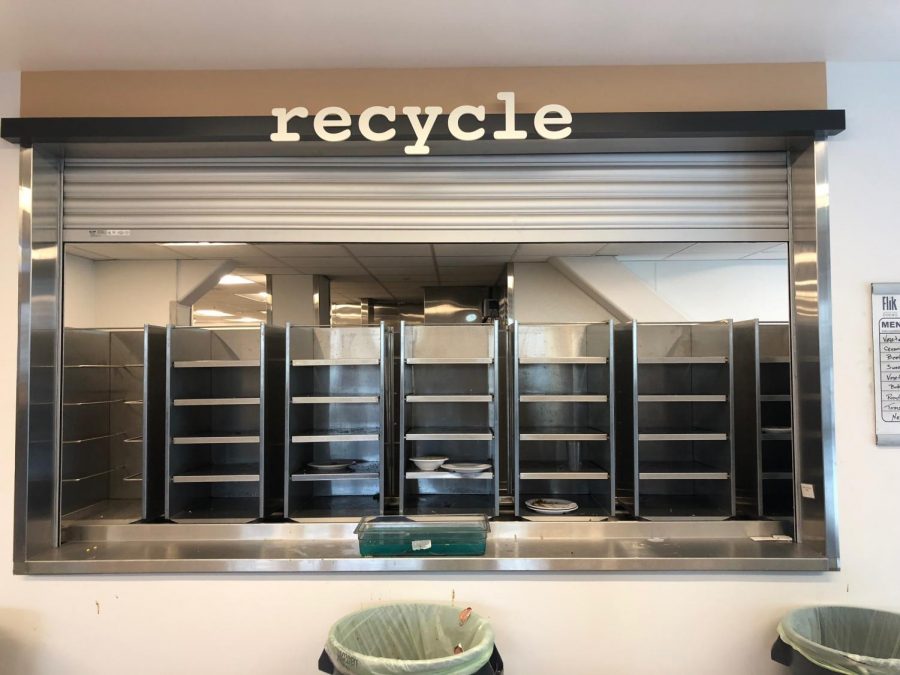Where does Menlo’s leftover food go?
Menlo’s conveyor belt for students to put their dirty plates and leftover food. Staff photo: Kate Hammond.
December 6, 2018
Over the years, food waste at the old and new cafeteria has been an issue due to students taking more food than they can eat. This year, the new cafeteria has partnered with Chefs to End Hunger to repurpose the leftover food in the cafeteria by donating the food to the hungry almost daily.
Los Angeles and San Francisco Specialty is the vendor from whom the cafeteria purchases its produce. LA and SF Specialty created an organization called Chefs to End Hunger that strives to “provide meals to the hungry by redistributing the excess prepared food that would normally go to waste,” according to their website.
Each LA and SF Specialty daily delivery to Menlo School contains donation kits made of cardboard boxes and three aluminum pans. The roughly four to seven gallons worth of food that is unable to be repurposed in the cafeteria each day is then transferred into the aluminum pans, which are put into the cardboard boxes and picked up on the next LA and SF Specialty delivery date.
In the San Francisco area, the leftover food is taken to a warehouse, where it is then distributed among two main non-profit organizations: Hope 4 the Heart and the Homeless Veterans Emergency Housing Facility (HVEHF), as specified on the Chefs to End Hunger website.
Hope 4 the Heart is a non-profit organization that provides basic necessities to local families who lack the resources to purchase food. By donating the food to Chefs to End Hunger, the Menlo cafeteria is helping to feed the more than 11,000 families who receive food from Hope 4 the Heart each month.
HVEHF is an organization that works to lessen the lack of emergency and transitional housing for veterans in the San Francisco Bay Area. The food donated from Chefs to End Hunger helps feed these veterans as they go through mental health treatment, transitional housing and vocational rehabilitation.
“I think that we need to continued to be encouraged by the staff and hopefully by student leaders, either by student council or any club that takes an interest,” Director of Sustainability Kevin Conner said. “The more that [food waste] is talked about and becomes apart of our culture, I think it would help eliminate the food waste.”
Over the years, the school has improved the issue of food waste through trial and error and learning, what they believe to be, the perfect amount of food to serve. “We base it off of what we serve the day before and what we need to produce or what we can cut back on. At the same time, there are things we need to produce more of,” Dean of Students Tony Lapolla said. “We are now in the second year with Flik, so we have a much better sense of quantities and we are doing better with that, therefore the less waste we will have because we portion it the right way.”
Menlo students can let the cafeteria know what food they like and what food they don’t in order to reduce the amount of wasted food. Knowing what students want to eat “is somewhat of a guessing game,” said Executive Chef Shawn Hunt.
The main source of food waste at the cafeteria is from students taking more food than they can eat. “When you are taking things from the dining hall, take what you want and realize you can always go back,” Lapolla said. “Student’s eyes are usually bigger than their stomachs so they load up then throw it away.”




